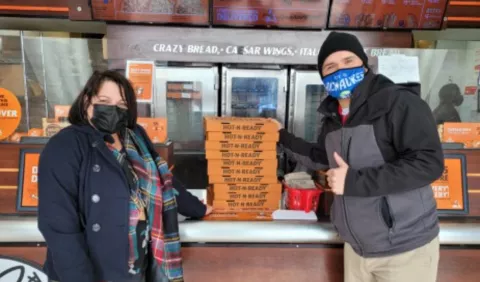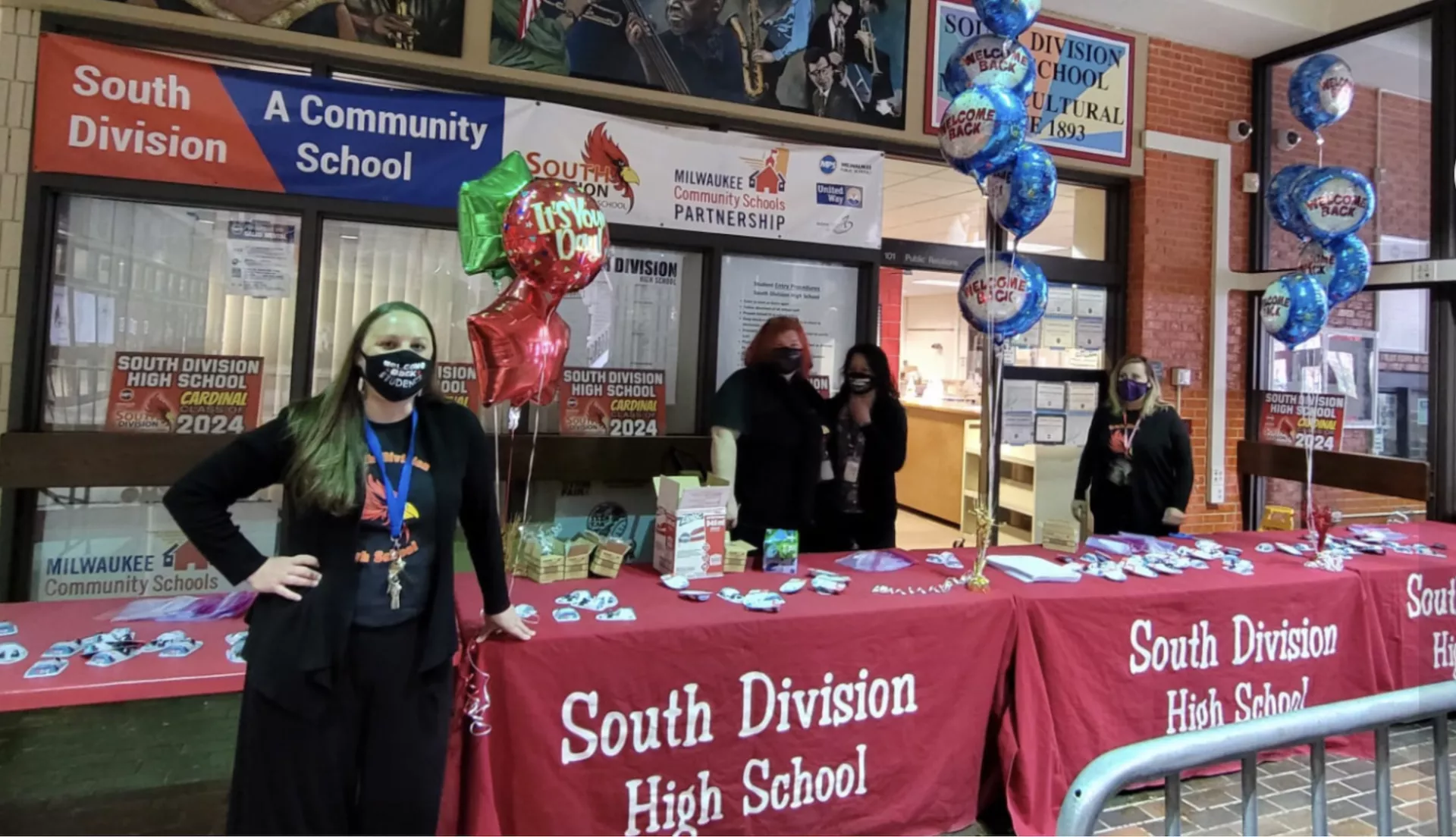The critical role school counselors play has been amplified by the pandemic and we’ve learned that investments in mental health supports must be part of how districts use the Biden Administration’s American Rescue Plan. We’ve also learned that community schools, where mental health staff are never in short supply and partnerships with local organizations that support the social and emotional issues students face, are a wise investment, not only for students, but the entire community.
NEA Today spoke with Zachary Stella, the School Counseling Director at South Division High School, in Milwaukee, Wisconsin, one of twelve Community Schools that are part of the Milwaukee Community Schools Partnership, to find out why.
What will next year look like for you and your colleagues?
I could go on and on about the extreme need for mental health professionals in my district and state-wide, but it will be especially prevalent once we enter the true recovery phase of the COVID-19 pandemic. Our students and their families have gone through a lot during this pandemic. Even when I think about how much I’ve gone through during the pandemic, I recognize my spot of extreme privilege; many of my students and their families do not have the same privileges.
Many have unstable housing. Many cannot find daily meals. Many are out of work to pay their bills. It’s imperative that the state of Wisconsin is up to the challenge of helping our students and their families get back to some sense of "normalcy" once the pandemic is over, and then we must prioritize the expansion of mental health services and mental health professionals in the school and community settings so that we don’t just survive, but thrive as a city, state, and country.
How do community schools allow for more mental health support?
The Community Schools Model allows schools to face these challenges because it requires everyone to have a seat at the table and a voice in the discussions of how to move our building forward. Our school administration is fully supportive of the mental health professional staff at South, and recognizes the need for them to support us all in order to do our jobs effectively. The work we do is noticed by the other stakeholders who can turn around and say, "Yeah, that staff at South truly is doing the best that they can to support our students and their families. Let's continue to support them and provide them the opportunities they need to thrive."
How has the pandemic impacted learning at South Division High School?
I wouldn't say there has been a learning loss in the way that the public at large thinks there has been. Many of our students have learned this year how to completely alter their methods of learning and learned skills that a "normal" school year wouldn't have otherwise taught them. For example, many of our students now understand how to navigate the world of email to communicate with others, a critical skill that goes otherwise untaught in a "normal" school year. There are certainly some (even many) students that have struggled mightily with a shift to virtual learning, but mostly because it was new for literally everyone and it was hard to know what to expect and easy to fall behind.
As a Community School, we will re-engage our students back into their education as much as possible by bringing multiple stakeholders (parents, students, staff, community partners, and more) to the table to understand one specific and clear vision for the school so they understand the purpose of education in our building, even during the challenges being faced this year.
How do community schools partner with local organizations and services?

We have a myriad of community partners that provide enrichment for our students, as well as academic and emotional support. Partners kept in touch during the pandemic on Instagram, sending inspirational and motivational messages. They also held video calls and gave students tips on self-care during the pandemic. One partner, College Possible, provides direct services for our juniors and seniors to help get them into the college-going mindset. They often work with students on college searches and applications, scholarship applications, tutoring, and one-on-one mentorship.
The pandemic deepened inequities, and College Possible doubled down on its efforts to support students from low-income families, offering some relief from the stress of college applications on top of COVID-19.
What are students feeling as they look to next academic year?
I think anxiety is probably the biggest issue as we progress toward reopening. There’s anxiety about the continued persistence of COVID in Milwaukee, anxiety for many about the return to the school building after literally thirteen and a half months of our building being closed for in-person instruction, anxiety about all of the moving parts that go into the reopening, and most importantly anxiety about trying to stay on top of all their classwork along-side a job or caring for a child or younger siblings, a job to help their families, or the many other stressors brought on by the pandemic and economic crisis.
Our school has many resources in place to help the students that are returning transition back into in the in-person format, as well as maintain our level of support given to the students that elected to remain virtual because they have been relatively successful doing so to this point in the school year. Some students benefit from fewer distractions, and we want to be able to continue to support them.
How was your school become a hub for the community?
My school is currently serving as a primary hub of COVID-19 relief for the 53204 ZIP code, one of the hardest hit and most vulnerable ZIP codes in all of the nation in terms of rate of infection for COVID-19. For example, we have had multiple mobile vaccine clinics/units settled at South, for MPS staff, students, our students' families, and the public at large, and continued to be one right up until the return to in-person instruction in late April. This is a primary example of how the Community Schools model for South is integrated literally within the fabric of our society. We are serving the needs of our community well beyond those of our students and their families.
What are you most proud of as a member of a community school community?
I think the pandemic allowed South Division to shine as a bright light in the 53204 zip code as a place that people could rely on, even if they didn't necessarily have students going there. South Division has had a bad reputation in the past, so to see people come back to the area in times of need can only help to increase the level of trust that our community members have in the school, and district as a whole, to provide critical services to the community.
The Community Schools model specifically has allowed us to already have a lot of the supports in place when the pandemic hit, and it was almost a given to help out the Milwaukee community. Community Schools model preaches that it is a team effort to get through life, "It takes a village" as the old adage goes.
NEA members should check their mailboxes in August for more on helping students as well as educators address mental health struggles in the NEA Today magazine coverstory.


